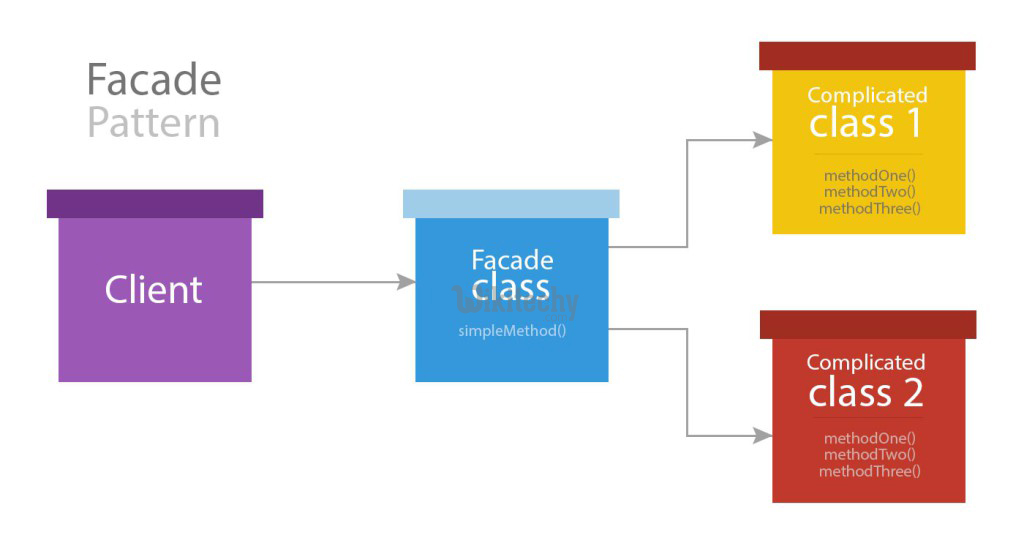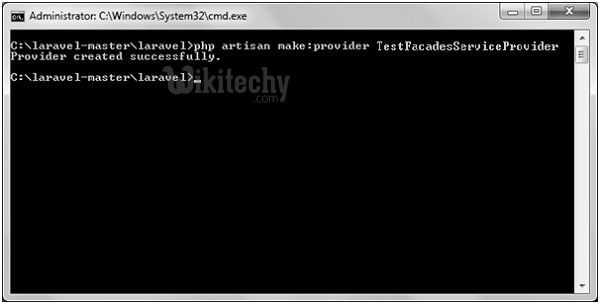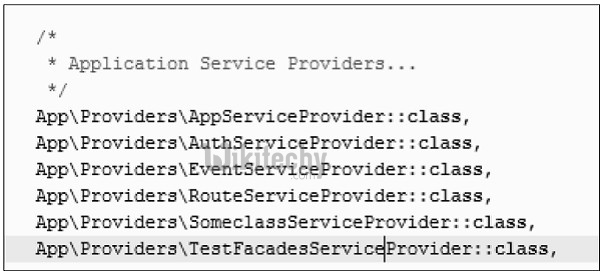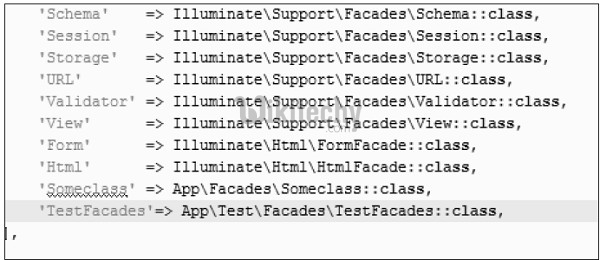Facade | Laravel-Facades

What is Laravel Facades?
- A Laravel facade is a class which provides a static-like interface to services inside the container.
- These facades, according to the documentation, serve as a proxy for accessing the underlying implementation of the container's services.
- Facades provide a "static" interface to classes that are available in the application's service container.
- Laravel "facades" serve as "static proxies" to underlying classes in the service container, providing the benefit of a terse, expressive syntax while maintaining more testability and flexibility than traditional static methods.
- All of Laravel's facades are defined in the Illuminate\Support\Facades namespace. So, we can easily access a facade like so:
use Illuminate\Support\Facades\Cache;
Route::get('/cache', function () {
return Cache::get('key');
});
- Throughout the Laravel documentation, many of the examples will use facades to demonstrate various features of the framework.
laravel , laravel framework , laravel documentation , laravel tutorial , laravel install , laracasts
How to create Façade
The following are the steps to create Facade in Laravel.
- Step 1 − Create PHP Class File.
- Step 2 - Bind that class to Service Provider.
- Step 3 - Register that Service Provider to Config\app.php as providers.
- Step 4 - Create Class which is this class extends to lluminate\Support\Facades\Facade.
- Step 5 - Register point 4 to Config\app.php as aliases.
Facade Class Reference
- Laravel ships with many Facades. The following are the in-built Facade class references.
| Facade | Service Container Binding | |
|---|---|---|
| App | Illuminate\Foundation\Application | app |
| Artisan | Illuminate\Contracts\Console\Kernel | artisan |
| Auth | Illuminate\Auth\AuthManager | auth |
| Auth | (Instance) Illuminate\Auth\Guard | |
| Blade | Illuminate\View\Compilers\BladeCompiler | blade.compiler |
| Bus | Illuminate\Contracts\Bus\Dispatcher/td> | |
| Cache | Illuminate\Cache\Repository | cache |
| Config | Illuminate\Config\Repository | config |
| Cookie | Illuminate\Cookie\CookieJar | cookie |
| Crypt | Illuminate\Encryption\Encrypter | encrypter |
| DB | Illuminate\Database\DatabaseManager | db |
| DB (Instance) | Illuminate\Database\Connection | |
| Event | Illuminate\Events\Dispatcher | events |
| File | Illuminate\Filesystem\Filesystem | files |
| Gate | Illuminate\Contracts\Auth\Access\Gate | |
| Hash | Illuminate\Contracts\Hashing\Hasher | hash |
| Input | Illuminate\Http\Request | request |
| Lang | Illuminate\Translation\Translator | translator |
| Log | Illuminate\Log\Writer | log |
| Illuminate\Mail\Mailer | mailer | |
| Password | Illuminate\Auth\Passwords\PasswordBroker | auth.password |
| Queue | Illuminate\Queue\QueueManager | queue |
| Queue (Instance) | Illuminate\Queue\QueueInterface | |
| Queue (Base Class) | Illuminate\Queue\Queue | |
| Redirect | Illuminate\Routing\Redirector | redirect |
| Redis | Illuminate\Redis\Database | redis |
| Request | Illuminate\Http\Request | request |
| Response | Illuminate\Contracts\Routing\ResponseFactory | |
| Route | Illuminate\Routing\Router | router |
| Schema | Illuminate\Database\Schema\Blueprint | |
| Session | Illuminate\Session\SessionManager | session |
| Session (Instance) | Illuminate\Session\Store | |
| Storage | Illuminate\Contracts\Filesystem\Factory | filesystem |
| URL | Illuminate\Routing\UrlGenerator | url |
| Validator | Illuminate\Validation\Factory | validator |
| Validator (Instance) | Illuminate\Validation\Validator | |
| View | Illuminate\View\Factory | view |
| View (Instance) | Illuminate\View\View |
laravel , laravel framework , laravel documentation , laravel tutorial , laravel install , laracasts
Example:
Step 1
- Create a service provider called TestFacadesServiceProvider by executing the following command.
php artisan make:provider TestFacadesServiceProvider
laravel , laravel framework , laravel documentation , laravel tutorial , laravel install , laracasts
Step 2
- After successful execution, you will receive the following output −

Step 3
- Create a class called “TestFacades.php” at “App/Test”.
App/Test/TestFacades.php
<?php
namespace App\Test;
class TestFacades{
public function testingFacades(){
echo "Testing the Facades in Laravel.";
}
}
?>
Step 4
- Create a Facade class called “TestFacades.php” at “App/Test/Facades”.
<?php
namespace app\Test\Facades;
use Illuminate\Support\Facades\Facade;
class TestFacades extends Facade{
protected static function getFacadeAccessor() { return 'test'; }
}
Step 5
- Create a Facade class called “TestFacadesServiceProviders.php”at “App/Test/Facades”.
<?php
namespace App\Providers;
use App;
use Illuminate\Support\ServiceProvider;
class TestFacadesServiceProvider extends ServiceProvider {
public function boot() {
//
}
public function register() {
App::bind('test',function() {
return new \App\Test\TestFacades;
});
}
}
laravel , laravel framework , laravel documentation , laravel tutorial , laravel install , laracasts
Step 6
- Add a service provider in a file config/app.php as shown in the below figure.

Step 7
- Add an alias in a file config/app.php as shown in the below figure. config/app.php

laravel , laravel framework , laravel documentation , laravel tutorial , laravel install , laracasts
Step 8
- Add the following lines in app/Http/routes.php.
Route::get('/facadeex', function(){
return TestFacades::testingFacades();
});
Step 9
- Visit the following URL to test the Facade. http://localhost:8000/facadeex
Step 10
- After visiting the URL, you will receive the following output −

